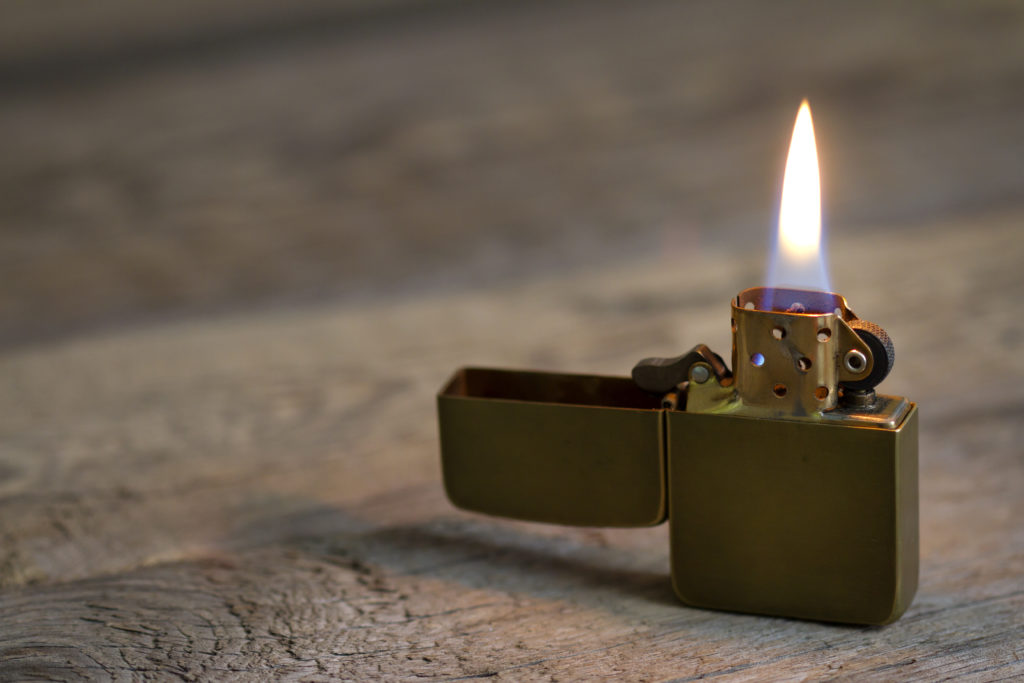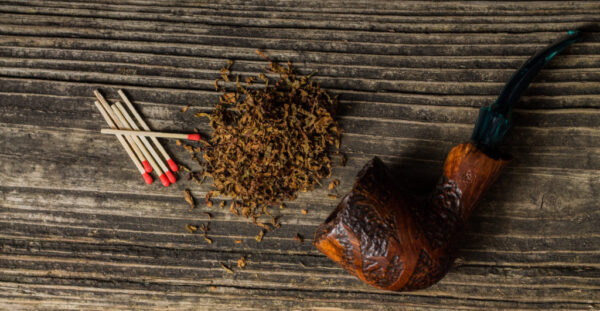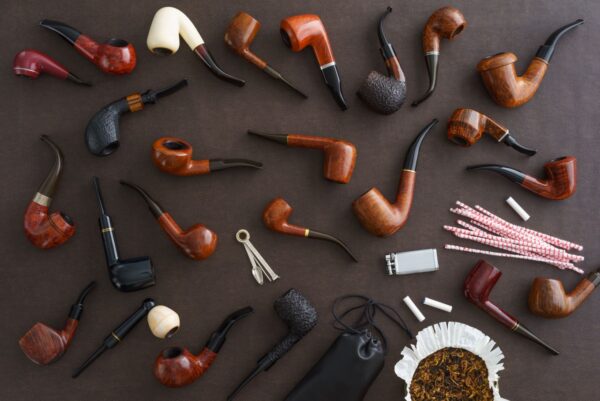Want to learn how to pack and light a tobacco pipe? It’s not as complicated as it seems. For the newbie pipe smoker, learning to pack your tobacco properly will be a valuable lifelong skill. If you don’t pack your pipe correctly, you’ll be left with dottle at the end of the smoke, or a pipe that’s too difficult to pull. For your own enjoyment, learn to do it right.
Packing and lighting is an art form, like smoking. It may take some time to master the techniques, but once you do, you’re well on your way to pipe-smoking bliss.
What you’ll need:
- A pipe
- Some tobacco
- A tamper of some sort
- A flame
- Pipe cleaners
How to Pack a Pipe
Packing a tobacco pipe correctly is crucial for achieving an optimal smoking experience. The packing technique determines how the tobacco burns, the airflow through the bowl, and the flavors you’ll experience. Follow these steps to pack your tobacco pipe effectively:
- Prepare Your Materials: Gather your pipe, a preferred tobacco blend, and a pipe tool or tamper. Ensure the tobacco is at an appropriate moisture level for smoking, as overly dry or wet tobacco can affect the packing process and the overall smoke.
- Loosen the Tobacco: Take a pinch of tobacco from the tin or pouch and gently rub it between your fingertips. This step loosens the tobacco, separates any clumps, and allows for better airflow during the smoke. It’s important not to overly crush or grind the tobacco, as it can lead to a tightly packed bowl.
- Begin the Packing Process: There are several packing techniques to choose from, but the most commonly recommended method for beginners is the three-layer method. Follow these steps:
a. Fill the Bowl: Start by filling the bowl loosely with tobacco. Avoid packing it tightly at this stage.
b. Lightly Press: Use your fingertips or the back of your pipe tool to press down lightly on the tobacco. This helps create a stable foundation for the next layers.
c. Repeat the Process: Add a second layer of tobacco, filling the bowl to about three-quarters full. Lightly press down again, ensuring an even surface.
d. Final Layer: Add a final layer of tobacco to the top of the bowl, leaving a small space between the tobacco and the rim of the bowl. This space allows for proper airflow.
- Tamp the Tobacco: Using a pipe tool or tamper, gently press down on the packed tobacco to achieve a firm but not overly tight pack. The tobacco should have some resistance when tamping, but it should not be compacted too tightly. A properly tamped bowl ensures an even burn and allows the tobacco to breathe during the smoke.
- Test the Draw: Before lighting your pipe, perform a “test draw” by taking a few gentle puffs. If the draw feels too tight, use your tamper to gently loosen the tobacco by lightly stirring it in a circular motion. If the draw feels too loose, apply a slight pressure when tamping to create a more compacted pack.
- Light the Pipe: Once you’re satisfied with the packing, it’s time to light your pipe. Use wooden matches or a pipe lighter to ignite the tobacco, and take slow, gentle puffs to ensure an even burn. Rotate the pipe as you light it to promote an even charring of the tobacco.
- Enjoy Your Smoke: Relax, take your time, and savor the flavors and aromas of the tobacco as you smoke your pipe. Be mindful of the cadence of your puffs, aiming for a slow and steady rhythm that allows you to fully appreciate the nuances of the tobacco.
Remember, packing a bowl takes practice, and it’s normal to experiment with different techniques to find what works best for you. With time and experience, you’ll develop your own packing style and achieve a satisfying smoke with each bowl. Enjoy the process, embrace the ritual, and let the art of packing contribute to your enjoyment of pipe smoking.
Prepare the Tobacco for Smoking
Remove a small pinch from your tin or pouch, lay it out on a flat surface, pick apart any clumps, and get a feel for its moisture content. Too moist? Let it sit out for a few minutes, and then come back. After drying, the tobacco will be much easier to handle.
Fill the pipe. Trickle strands of tobacco into the bowl until it’s filled the brim. You may have the urge to push the tobacco down with your thumb half-way through this action, but this will only cause more clumps to form, erasing some of the prep work you have just done.
Compress the tobacco. Use a tamper, a pipe-nail, or something similar to do this. For bowls with straight sides, you should only fill about halfway; for tapered bowls, go for two-thirds.
Do a test run. Take the pipe to your lips and take a few draws. If it gives you resistance, dump the tobacco and restart.
Tobacco Pipe Lighting Procedures
Lighting the pipe is a much more straightforward operation. You simply need an open flame. There are, of course, measures you can take to maximize satisfaction.
Perform a “false light”: apply a flame to the tobacco and move it in circular motions around the whole surface of the tobacco. This will expel any extra moisture before you go in for the real smoke.
Tamp the tobacco back down. It might be useful to twist or spin the tamp in a circular motion as well. Just don’t go overboard; only return the tobacco to the level it was before.
Relight the match, apply it to the tobacco, and continue circular motions. Do some puffing while you perform this action. Does the tobacco unravel? It shouldn’t.
Now you’re ready to sit back, relax, and enjoy your smoke. If the process didn’t work out perfectly, no worries: pipe-smoking takes time and practice, sometimes a couple months’ worth. Having to relight your pipe is a fact of life from time to time.






